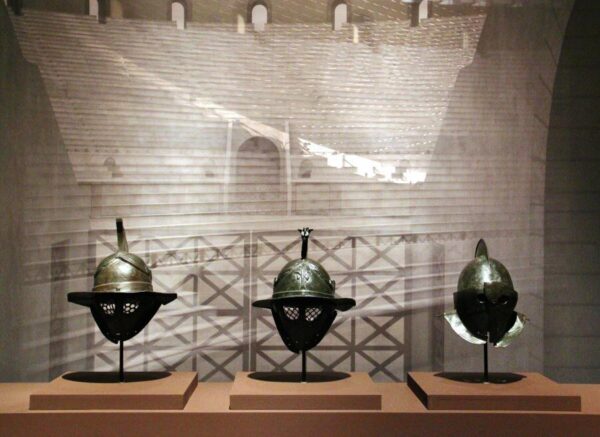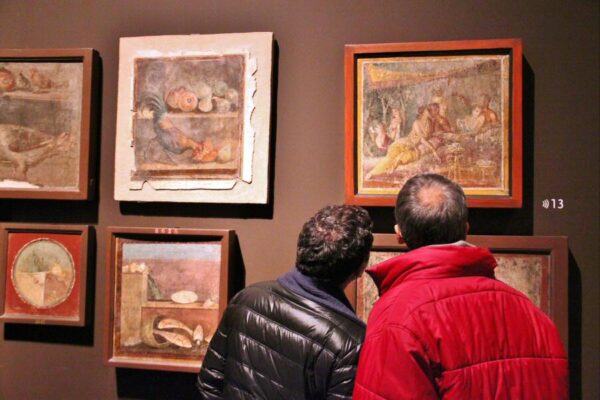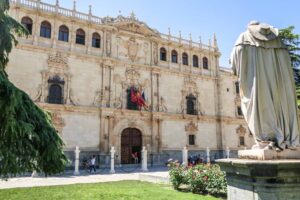"Mommy, can I see the skeleton again?"
La history of Pompeii and its destruction under the Vesuvius eruption, there is no doubt that it has always aroused great fascination among everyone, and it could not be less among the children who visit the recently inaugurated exhibition in Madrid.
This exhibition that you can visit in the center Channel Art from the Plaza de Castilla until May's 5 of 2013, explains the catastrophe that on August 24, 79 AD buried the Roman city of Pompeii, and others nearby like Herculaneum, under the ashes expelled by Vesuvius.
For those of you who have had the opportunity to visit Pompeii, south of Naples, the exhibition allows you to remember the visit, but also, thanks to it you can learn in depth the causes of the eruption and why the inhabitants of the cities at the foot of Vesuvius did not flee after the first tremors and explosions.
If you have not yet visited Pompeii or Herculaneum, I can tell you that in the archaeological excavations You can walk through the streets and between the walls of the houses, but practically all of its artistic wealth is found in the National Archaeological Museum of Naples.
Now in the center Channel Art de Madrid You have a very small sample of the objects, sculptures and paintings found during the excavations carried out in the 18th century by the Spanish King Charles III, during his reign in Naples.
So, in the Pompeii exhibition You will see tools, instruments, amphorae, glass pieces and a wide variety of objects found in the remains of the ancient Roman city.

You can also see sculptures, busts and, of course, some paintings and frescoes, with the characteristic Pompeian style.
All this occurs in various environments, such as the House of Menander, where you can see an audiovisual that presents you in a virtual way what a Roman house of Pompeii.
In the Canal Art exhibition, from one point you find a huge panel painted gray that seeks to convey the sensation of what the seven meters of ashes that covered the city of Pompeii meant.
And it is in this section where you find some of the most striking elements for those of us who have always been fascinated by history of Pompeii, the molds human figures and petrified animals, as well as the remains of human skeletons of people who died in Herculaneum, also petrified.
The last area of the Pompeii exhibition It is the one dedicated to the figure of Charles III, like the Archaeologist king, who promoted these historic excavations, which over time brought to light the streets and houses of Pompeii and Herculaneum, and through which you can now walk.

The exhibition culminates with the projection of an excellent BBC documentary that shows you how the last hours of the citizens of Pompeii. Essential to see, in it you will discover that the Romans did not know that Vesuvius was a sleeping volcano.
And that, in reality, there was not a lava eruption, but rather a big explosion, which raised the ash that had been accumulating due to internal tensions up to 11 kilometers high, and which was then followed by a burning cloud (pyroclastic flow) that devastated the city at enormous speed.
And knowing that this type of eruption happens...every 2.000 years.
Given the length of the documentary, 50 minutes, I advise you that once you start visiting the exhibition, you go to the projection room located at the back of the venue, to the left (there is a lack of adequate signage), to see when the exhibition begins. next pass, and thus make better use of the time of your visit.
In short, a very interesting and educational appetizer for the future trip to Pompeii, with the essential complement of the visit of the Archaeological Museum of Naples, where you will be surprised by the impressive frescoes and mosaics recovered in archaeological excavations.

















A very interesting exhibition! We will take it into account if we travel to Madrid. Congratulations on the post!